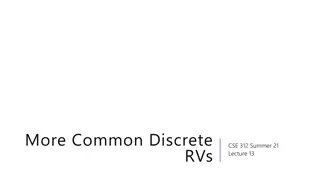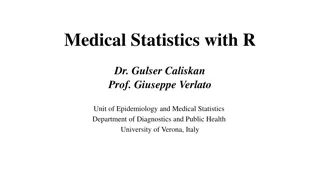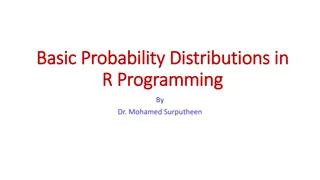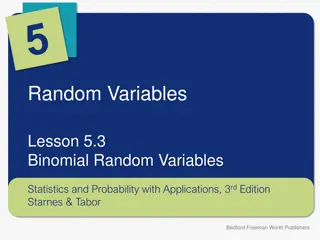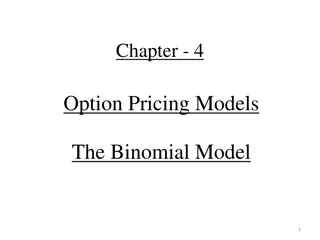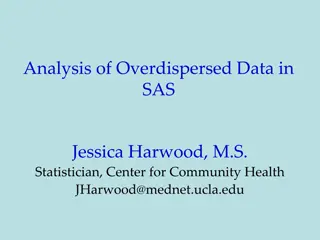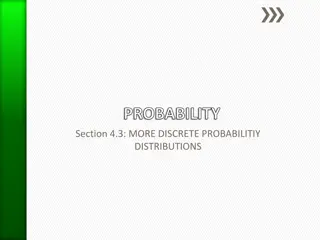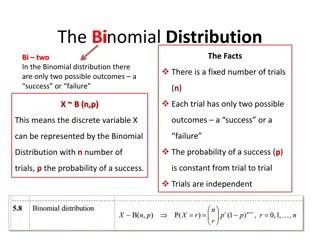
Sample Size Methods for Incidence Rates: A Comprehensive Overview
Explore the world of sample size determination for incidence rates, including traditional methods and modern approaches like Negative Binomial and Quasi-Poisson models. Get insights, examples, and references to enhance your understanding in this field of study.
Download Presentation

Please find below an Image/Link to download the presentation.
The content on the website is provided AS IS for your information and personal use only. It may not be sold, licensed, or shared on other websites without obtaining consent from the author. If you encounter any issues during the download, it is possible that the publisher has removed the file from their server.
You are allowed to download the files provided on this website for personal or commercial use, subject to the condition that they are used lawfully. All files are the property of their respective owners.
The content on the website is provided AS IS for your information and personal use only. It may not be sold, licensed, or shared on other websites without obtaining consent from the author.
E N D
Presentation Transcript
SESSION 7 Sample Size for Incidence Rates
Sample Size for Incidence Rates (Counts) Incidences rates (a.k.a counts) are a study outcome where measuring rate of event per unit time Traditional methods were normal approximations or Poisson model Negative Binomial or Quasi- Poisson model increasingly popular Sample Size methods for NB and Q-P being actively researched and extended to equivalence/NI Source: R. Lehr (1992) Source: H. Zhu & H. Lakkis (2014) Source: Y. Tang (2015)
Negative Binomial Regression Example On the basis of previous studies of fluticasone propionate salmeterol combinations we assumed a yearly exacerbation rate with vilanterol of 1 4 and a dispersion parameter of 0 7. Thus, we calculated that a sample size of 390 assessable patients per group in each study would provide each study with 90% power to detect a 25% reduction in exacerbations in the fluticasone furoate and vilanterol groups versus the vilanterol only group at a two-sided 5% significance level Source: MT Dransfield et al (2013) Parameter Significance Level (Two-Sided) Control Incidence Rate (per year) Rate Ratio Exposure Time (Years) Dispersion Parameter Power (%) Value 0.05 1.4 0.75 1 0.7 90%
nQuery Plans for Incidence Rate Add more options for Count Data Modelling More complex Tang method for Negative Binomial inequality Add methods for quassi-Poisson and more equiv/NI tables Potential for exact or simulation approaches for two sample case Additional options for one-sample and >2 type designs Zero-inflated Poisson and Negative Binomial models Zero-truncated Poisson and Negative Binomial models Random-effects, CRT and mixed model approaches Feedback/Suggestions/Papers for methods very welcome
References Incidence Rates Lehr, R. (1992). Sixteen S squared over D squared: A relation for crude sample size estimates. Statistics in medicine, 11(8), 1099-1102. Signorini, D. F. (1991). Sample size for Poisson regression. Biometrika, 78(2), 446-450. Gu, K., Ng, H. K. T., Tang, M. L., & Schucany, W. R. (2008). Testing the ratio of two poisson rates. Biometrical Journal, 50(2), 283-298. Zhu, H. (2017). Sample size calculation for comparing two poisson or negative binomial rates in noninferiority or equivalence trials. Statistics in Biopharmaceutical Research, 9(1), 107-115. Zhu, H., & Lakkis, H. (2014). Sample size calculation for comparing two negative binomial rates. Statistics in medicine, 33(3), 376-387. Tang, Y. (2015). Sample size estimation for negative binomial regression comparing rates of recurrent events with unequal follow-up time. Journal of biopharmaceutical statistics, 25(5), 1100-1113. Tang, Y. (2017). Sample size for comparing negative binomial rates in noninferiority and equivalence trials with unequal follow-up times. Journal of biopharmaceutical statistics, 1-17. Dransfield, M. T., et. al. (2013). Once-daily inhaled fluticasone furoate and vilanterol versus vilanterol only for prevention of exacerbations of COPD: two replicate double-blind, parallel-group, randomised controlled trials. The lancet Respiratory medicine, 1(3), 210-223.




